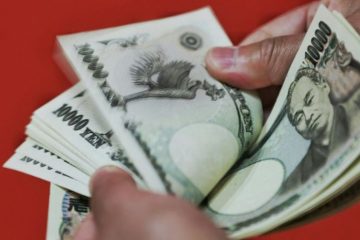Yuan hits 2007 lows as US tariffs on China begin

The yuan has declined to levels not seen since 2007, following the implementation of US tariffs on Chinese goods. On Wednesday, China’s yuan concluded trading at its lowest point in over 17 years, following a significant drop in its offshore counterpart, which reached a record low overnight. This decline comes amid heightened tensions in the ongoing Sino-U.S. trade war, causing considerable volatility in currency markets.
The onshore yuan concluded the domestic trading session at 7.3498 per dollar, marking its lowest close since December 2007. The recent declines are attributed to the escalating trade war between the globe’s two largest economies. On Wednesday, U.S. President Donald Trump implemented “reciprocal” tariffs affecting numerous countries, notably imposing substantial 104% duties on imports from China. China’s leading officials are set to convene as early as Wednesday to discuss strategies aimed at enhancing economic growth and stabilizing capital markets, according to sources familiar with the situation.
In response to ongoing tariff pressures, sources indicate that China’s central bank is taking measures to prevent significant declines in the yuan. Reports suggest that the central bank has instructed major state-owned banks to limit their purchases of U.S. dollars, as confirmed by individuals with direct knowledge of the situation on Wednesday. “Capital Economics has indicated in a recent client note that, barring any reversals, the recent tariff increases imposed by the U.S. are projected to result in a significant reduction of over 50% in China’s exports to the U.S. in the coming years, even with the assumption that the renminbi depreciates to 8 against the dollar.”
“Analysts project that this development could lead to a reduction in China’s GDP by approximately 1.0-1.5%, contingent upon the degree of rerouting of exports through alternative countries.” The impact is greater than previously anticipated; however, it is likely to be addressed with an additional increase in fiscal support.
The offshore yuan recovered some ground, rising approximately 0.7% to 7.3769 yuan per dollar during Asian trading hours. This follows a decline of over 1% in the prior session, where it reached a record low of 7.4288 overnight.
On Wednesday, the People’s Bank of China established the midpoint rate for the onshore yuan at 7.2066 per dollar, marking the lowest level since September 11, 2023. This rate is significant as it determines the trading band within which the yuan is permitted to fluctuate, set at a 2% margin. The yuan is permitted to decline to a fixing level of 7.3507, slightly above the 7.3510 low recorded in September 2023. The fixing was 1,282 pips stronger than a Reuters estimate, indicating that the central bank is hesitant to allow a significant depreciation of the currency.
On Wednesday morning, Chinese state-owned banks actively engaged in selling dollars in the onshore spot market, a strategic move aimed at mitigating the rapid depreciation of the yuan, as reported by two sources with knowledge of the situation. Both the onshore and offshore yuan have experienced a decline of over 1% this month, marking a continued weakening since the beginning of the year. This downturn is largely attributed to concerns surrounding the impact of tariffs.
On Tuesday, Trump leveled accusations against China, alleging that the nation is manipulating its currency to mitigate the effects of tariffs. Economists have indicated that a weaker yuan could lead to cheaper exports, potentially easing some of the pressures on China’s trade and overall economy. However, they caution that a significant decline in the currency might trigger undesirable capital outflows and pose risks to financial stability.









